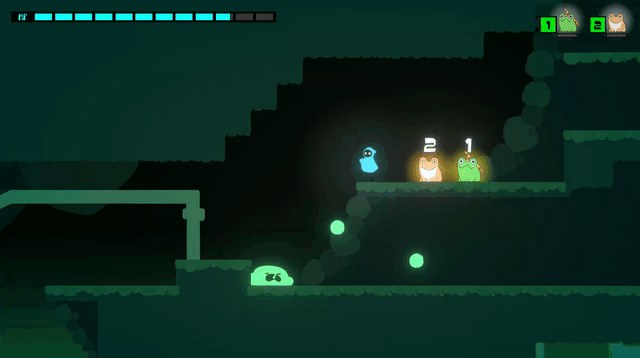Frog Snatchers
Project Summary
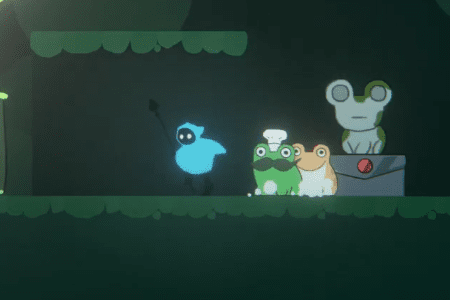
Frog Snatchers is a 2D platformer adventure game, where you play as a frog collector whose frogs have been stolen. The game has a heavy focus on deep and satisfying combat and movement systems that will make exploring the large, interconnected world feel empowering and engaging. The game has a story that is defined by small character interactions. These character interactions are meant to be funny and make the game very light-hearted. This differentiates our game from other metroidvanias because other games in the genre tend to be very serious and gritty. Our game could make the metroidvania genre more accessible and silly for newcomers and give fans of the genre an exciting, fresh take on it. Frog Snatchers was inspired by the sense of exploration and combat of metroidvanias like Hollow Knight, the unique character interactions of Undertale, and the team's undying love of frogs.
Project History
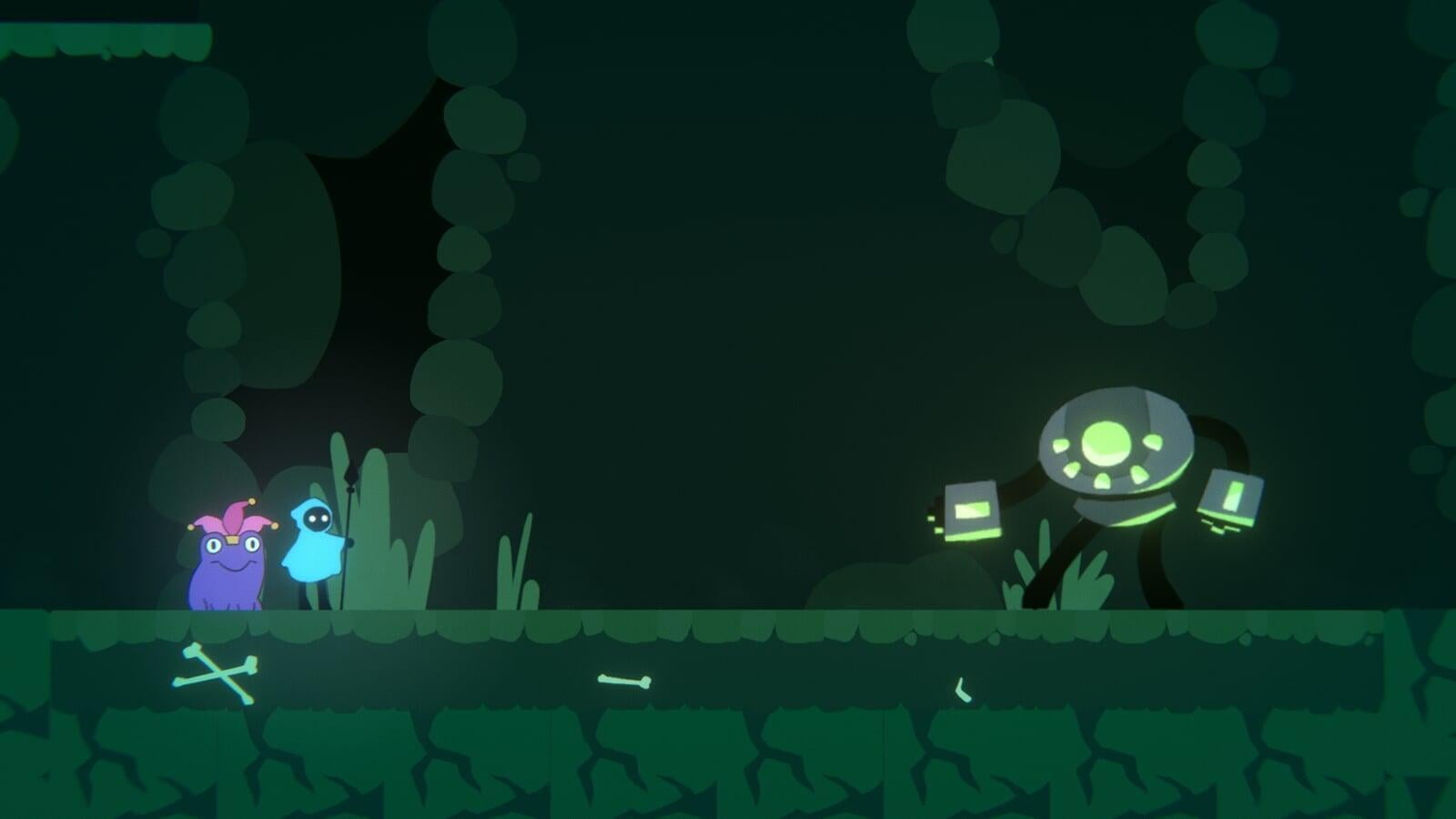
Frog Snatchers began as a senior project for my team and I for our capstone course at Champlain College.This team was initially made up of only members that worked together the year prior to make Planet Snatchers, a highly competitive, 3D, multiplayer game, so in making this large scale, 2D, single player experience we wanted to challenge ourselves to learn new skills. Halfway through the school year, the majority of the games being made in Champlain's Capstone courses get cut and the members of those teams redistributed to the remaining teams. Frog Snatchers was one of the games that made it through cuts and was lucky enough to absorb more members.
It was a massive challenge for the original team to incorporate these new members and have them match the style and level of polish that the original team had put forth into the project. This 2nd half of the school year also revealed just how massive of a project Frog Snatchers was going to be: lots of level to explore, many unique areas, NPCs with dialogue, bosses, special abilities, etc. With big cuts to features and areas in the game and a small last minute rush we built a version of the game we were proud to submit and show off at Champlain's Senior Games Showcase, an exhibition for all of the senior game majors at the school to show off their work to classmates and industry scouts. It was well received.

After graduation, my original team decided to start an indie studio and refine, rework, and release Frog Snatchers as our first project. There was a lot of work to be done with a lot of mechanics, areas, and art that needed to be brought in line with the quality that we would feel proud to release to the world. With a completed a first round of changes, a playable demo, and promotional material we launched a Kickstarter for Frog Snatchers, in hopes to draw in some funding from folks who thought our game was worth it. Our initial week or so after the launch went great; it brought in new fans, our friends and family contributed. We ended up getting to about a third of our goal before realizing that we would not make our already low goal. We pulled the campaign early and issued a thank you to everyone who supported us, but we were not ready to give up on the project yet.
We took all of the feedback and lack of support back to the drawing board and decided that more of the game needed to be re-worked more. The process of reworking and refactoring dug deep into the game. We questioned, and refactored art decisions, core gameplay implications of the frogs, UI design, and level design. The process of, in essence, re-making the whole game took a lot out of the team and made it feel like we were spinning our wheels for a few months. This apparent lack of progress and team burn out on the project led us to dropping the game from production in pursuit of other projects.
Level Design Process
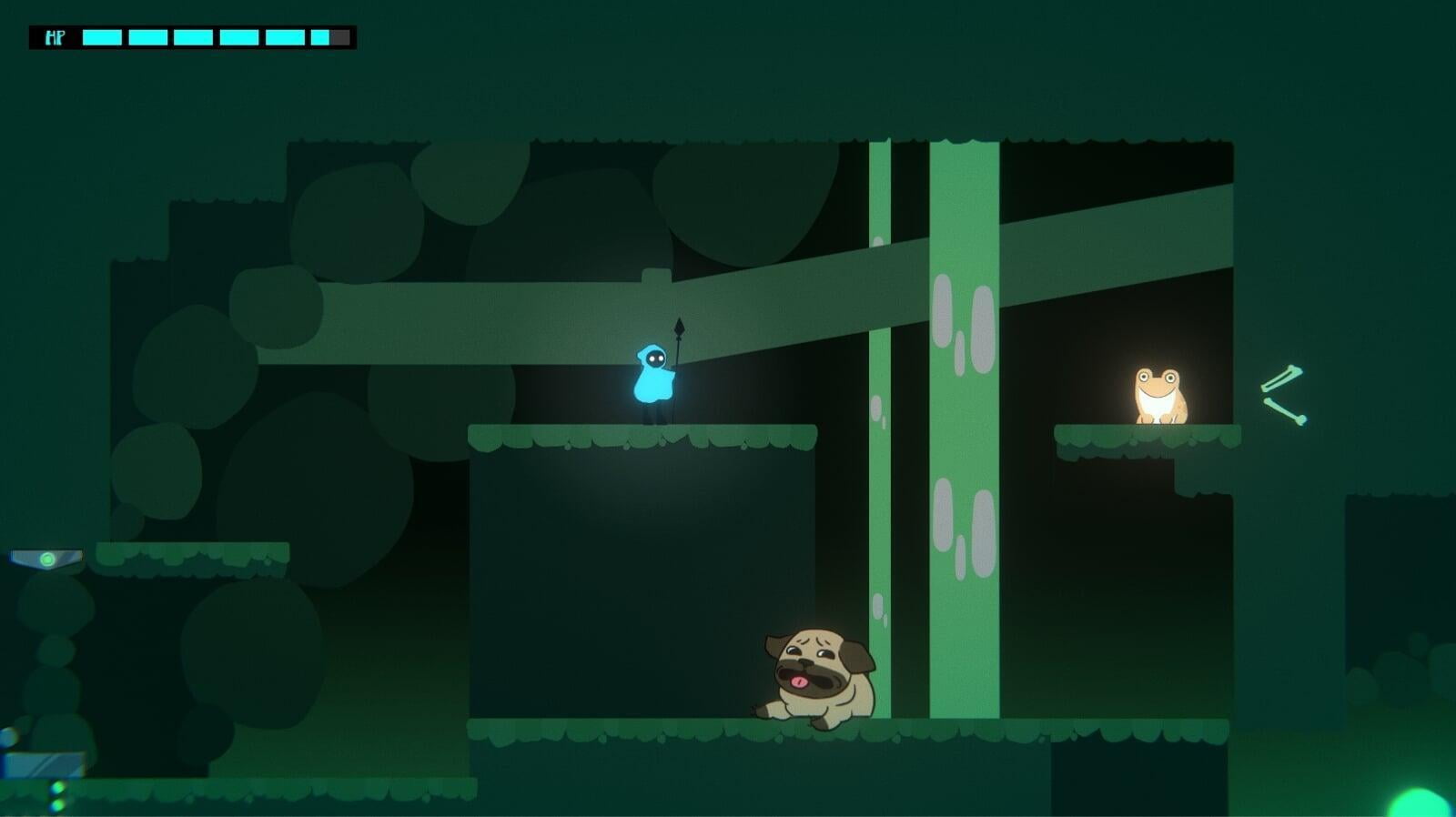
If you're unfamiliar with the metroidvania genre, it is a 2D platforming genre really centered around exploring large open worlds, fighting enemies, and unlocking upgrades for your character. Choosing to create this type of game immediately puts a huge risk associated with level design and scope. The team and I had to choose how the world would be broken up. We knew that we wanted to have different areas of the world with different themes. The two ideas that we bounced around was having a hub world that the player would travel from to other areas and explore those. The other option, which is what the team decided to go with was to have the whole world be interconnected. While this was the option that presented the most risk in doing, I felt like the sense of exploration and cohesion that the player would feel by actually travelling between these areas would make up for the added difficulty of creating. From my research of the genre, this sense of exploration and place in the world is crucial to a metroidvania's success.
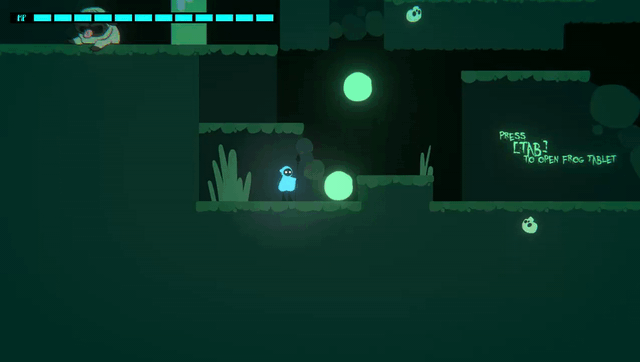
My initial design philosophy in making content for Frog Snatchers was to have the golden path be taken up by easy challenges that any player can overcome and all side areas contain more difficult platforming/combat encounters for more hardcore players to overcome for rewards. In the re-working of the game's content later in it's life, I came to the realization that this would really only make exploring the vast expanse of world frustrating for more inexperienced players. In my rework of the map I decided that the golden path would again be easy to follow and get through for new players, but would gate side areas with platforming mechanics that were visually noticeable and can only be used/reached after obtaining an ability along the golden path. A good example of this is the slime bubbles. These bubbles are scattered throughout the sewer area and are visually distinct and poppable without the ability to use them in platforming, so players remember them and where they are. When they get the pole vault ability (the necessary tool to pop them from above and bounce off of them) they will return to the area to explore and rescue more of their frogs, meet new characters, etc.
UI Design Process
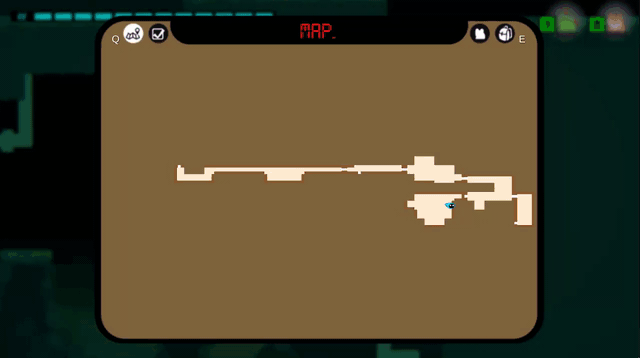
Frog Snatchers's UI/UX always felt like a big challenge for me. Many of the ideas that we wanted to communicate were simple but the team and I wanted to be able to show them in an interesting and stylistic way. Our menu for the game was decided to be a journal that the main character carried with them, we called it the frog book. Initially, the book's pages would function as different menus to keep track of what frogs you had rescued, a map that filled in as you explored it, quest notes, etc. Frogs were contextualized as stickers in the book, the map drawn on 2 pages, and quest notes jotted down by the main character. This book was a great contextual menu for the first part of the project's life, but I could not adequately convey they book pages turning so it didn't have the right feel to it.adequately convey they book pages turning so it didn't have the right feel to it.
I decided that the book needed to be replaced, and the solution I came up with was replacing it with a tablet. The tablet would be able to give way to more effects that we could use to more effectively communicate information rather than solely static images in the book.communicate information rather than solely static images in the book.
Similar effects can be seen in the differences between older versions of the health bar/frog equipped HUD elements. To keep in line with the stickers in the book, I attempted to make the health bar look like a sticker that was being pulled off of the screen when getting hit, leaving sticky residue behind when peeled letting the player know how much health had been lost. This was replaced with a more simple HP bar that matched the player's color to indicate the connection bettwer. This new health bar was segmented to allow us to allow the player more easily tell how much health they had lost from getting hit and how much more they really had.


